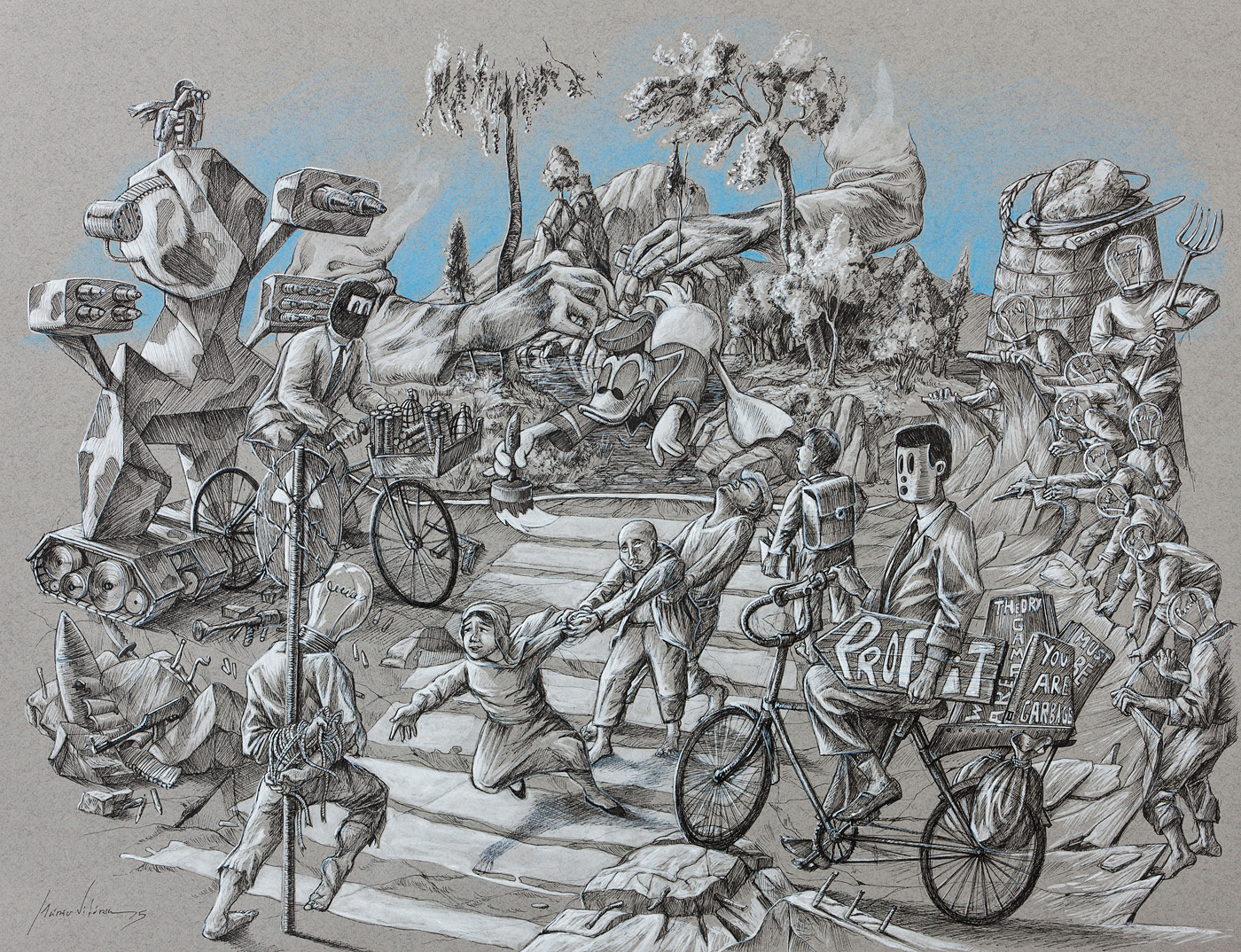Satyagraha
Reductively understood as a synonym of civil disobedience, civil resistance or passive resistance, Satyagraha is among the main philosophical concepts that was coined by Mohandas Karamchand Gandhi in his mother tongue of Gujarati. Satyagraha was formed by combining two words - 'truth' (Satya) and ‘firmness’, ‘desire’, ‘insistence’ or ‘determined pursuit’ (Agraha). The combination resulted in ‘firmness on truth’, ‘desire of truth’, ‘insistence on truth’ or ‘determined pursuit of truth’. Gandhi’s political philosophy was essentially based on a spiritual (but not sectarian) horizon in which the scope of individual and social life is identified with the metaphysical ‘search for truth’ to be achieved through the physical and continuous experimental path of moral life. Gandhi’s philosophy is based on non-violence and self-control in the deeper meaning. Non-violence is the means with which to achieve truth, while it is also a way of living and dealing with anthropological and social challenges.
Understanding Satyagraha simply as a form of civil disobedience results in many fundamental meanings of the term to remain unseen. As a moral, political and applied philosophy, Satyagraha is part of an alternative world view. As an everyday practice it is a method of applied morality to achieve that world view. In historical terms, Gandhi matured the political objective of the concept to achieve Indian independence from British colonial rule. This, however, was just a step towards a wider process of civilizational reinvigoration to which he wanted to lead the people of India in search of a richer form of democracy, or swaraj (self-rule). Self-rule is the basic objective that orientates the practice of Satyagraha. In order to achieve a superior state of selflessness its practitioners made vows of renunciation to their own bodily and sensory desires, and renunciated what was unnecessary for basic life subsistence. Selflessness was of primary importance in everyday life as a basis of the ethical self-rule community and as a form of struggle. In this way Satyagraha became a means to achieve concrete social and political objectives. In such cases the Satyagrahi were ready to renounce any state of exception, for example, rejecting privileges or favouritism of any sort if incarcerated, and being prepared to be at the complete disposal of the cause (or truth) including the possibility of dying.
The term was invented in South Africa when Gandhi was unsatisfied with the interpretation of ‘passive resistance’ as coming to mean the resistance of the weak or those who have no alternative. He understood and experienced Satyagraha as a superior force, much more acute and complex with respect to physical force or ‘brute force’. Satyagrahi abstained from inflicting violence and postulated and practiced self-suffering as a method of struggle. They aimed to persuade – or ‘convert’ – the adversary over the unacceptability of a principle of moral importance. Satyagraha is not the renunciation of violence because of personal or societal weakness, but rather is the adoption of non-violence as a courageous action to use pure means (non-violence) in order to achieve the superior end (truth). In 1906 Gandhi announced a contest to identify an appropriate word to better denominate their struggle and Maghalal Gandhi proposed the term ‘Sadagraha’ (‘firmness in a good cause’). Gandhi adjusted it to Satyagraha.
Gandhi’s ashrams were the training centres for Indian Satyagrahi to experience and practice Satyagraha at a personal level (self-experience) before joining collective campaigns. Collective campaigns included civil resistance and also popular development through the ‘constructive programme’ which was Gandhi’s attempt to reinvigorate and improve the social, political, economic and moral life of India. Ashram and Satyagraha served to provide a popular education and to achieve social progress in various areas including economic self-sustainability, health and sanitation, struggle against cast-discrimination and emancipation of women. Gandhi’s philosophy goes beyond the modern divide public/private, state/civil society and enters in all life spheres to democratise them in a tension that Santos names ‘high intensity democracy’.
Satyagraha was a radical democratic philosophy and moral practice to struggle against undemocratic colonial rule. It intended to do so by not opposing violence with arms and rage due to the fact that it would mark the future of the independent people of India. He adopted a philosophy of love and compassion so that India could be reconstituted on these values. It was a proposal to go beyond colonialism and a limited vision of democracy at the same time.
Satyagraha is a very valuable contribution according to the perspective of the ´Epistemologies of the South´. This is as it is not only a critical and progressive struggle within the Hindu and Indian traditions but it is also in defence of their uniqueness. It was resolutely used against British imperial power but was not a struggle restricted to colonialism. It also tackled two other forms of modern oppression: capitalism and patriarchy. It sublimates the definition of knowledge born in struggle as a contribution to a different paradigm of life.
References and further readings:
Gandhi, Mahatma K. (1938), Hind Swaraj or Indian Home Rule. Ahmedabad: Navajivan.
Gandhi, Mahatma K. (1950), Satyagraha in South Africa. Ahmedabad: Navajivan. Translated by V. G. Desai. [2nd ed.]
Santos, Boaventura de Sousa (2018) The End of the Cognitive Empire: The Coming of Age of Epistemologies of the South. Durham: Duke University Press. Chapter titled ‘Gandhi, an Archivist of the Future’, 209–246.
Cristiano Gianolla is researcher at CES since 2017, his main fields of expertise are democratic theories and their intersections with the metaphorical South, intercultural dialogue, cosmopolitanism and post-colonialism. He integrated/s the research teams of various projects including ALICE (ERC 2011-2016) and ECHOES (H-2020 2018-2021).
Como citar
Gianolla, Cristiano (2019), "Satyagraha", Dicionário Alice. Consultado a 27.07.24, em https://alice.ces.uc.pt/dictionary/index.php?id=23838&pag=23918&entry=24532&id_lingua=2. ISBN: 978-989-8847-08-9







